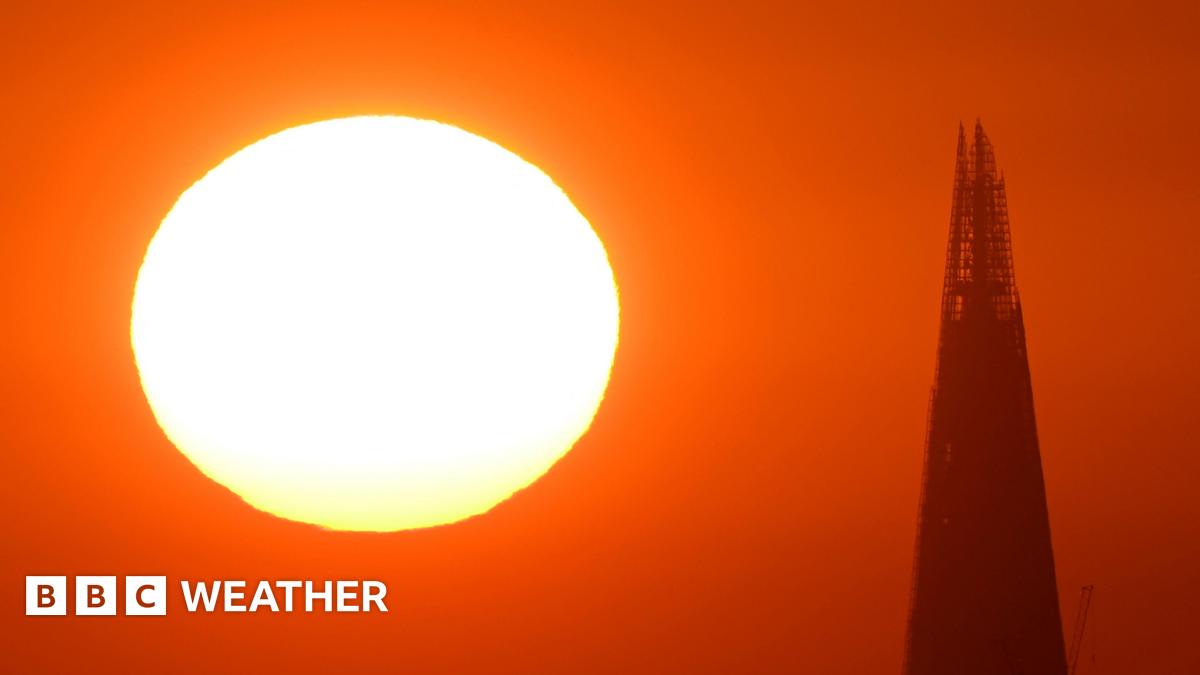UK Heatwave: Understanding The Urban Heat Island Effect

Welcome to your ultimate source for breaking news, trending updates, and in-depth stories from around the world. Whether it's politics, technology, entertainment, sports, or lifestyle, we bring you real-time updates that keep you informed and ahead of the curve.
Our team works tirelessly to ensure you never miss a moment. From the latest developments in global events to the most talked-about topics on social media, our news platform is designed to deliver accurate and timely information, all in one place.
Stay in the know and join thousands of readers who trust us for reliable, up-to-date content. Explore our expertly curated articles and dive deeper into the stories that matter to you. Visit Best Website now and be part of the conversation. Don't miss out on the headlines that shape our world!
Table of Contents
UK Heatwave: Understanding the Urban Heat Island Effect
The UK is sweltering under a prolonged heatwave, with temperatures soaring to record-breaking levels. While climate change is a significant contributing factor, the intensity of the heat in urban areas is exacerbated by the urban heat island effect. This phenomenon, where cities are significantly hotter than surrounding rural areas, is a critical concern for public health and requires understanding to mitigate its impact.
What is the Urban Heat Island Effect?
The urban heat island effect is a meteorological phenomenon characterized by higher temperatures in urban areas compared to their rural surroundings. This difference can be substantial, reaching several degrees Celsius, particularly during nighttime and heatwaves. Several factors contribute to this temperature disparity:
- Lack of Vegetation: Trees and plants provide shade and cool the air through evapotranspiration (the process of water evaporating from leaves). Urban areas often lack sufficient green spaces, leading to increased heat absorption.
- Building Materials: Concrete, asphalt, and other building materials absorb and retain significantly more heat than natural surfaces like soil and vegetation. This stored heat is then released at night, keeping urban temperatures elevated.
- Human Activities: Industrial processes, vehicle emissions, and air conditioning units release heat into the atmosphere, further contributing to the urban heat island effect.
- Reduced Wind Flow: Tall buildings and dense structures impede wind flow, reducing natural ventilation and exacerbating the heat buildup.
The Impact of the Urban Heat Island Effect During the UK Heatwave
The current UK heatwave dramatically highlights the dangers of the urban heat island effect. Cities like London, Birmingham, and Manchester are experiencing significantly higher temperatures than surrounding countryside, placing vulnerable populations at increased risk of heatstroke and other heat-related illnesses. This effect is particularly pronounced during nighttime, when temperatures in urban areas remain elevated, hindering respite from the daytime heat.
Mitigation Strategies: Cooling Down Our Cities
Addressing the urban heat island effect requires a multi-pronged approach incorporating various strategies:
- Increasing Green Spaces: Planting more trees and creating green roofs and walls can significantly reduce urban temperatures. Initiatives like urban forestry programs are crucial.
- Sustainable Building Materials: Utilizing materials with higher albedo (reflectivity) can reduce heat absorption. Light-colored pavements and roofs can reflect sunlight, keeping surfaces cooler.
- Improved Urban Planning: Designing cities with better ventilation and shade can minimize the heat island effect. This includes strategically placed buildings and wider streets.
- Water Management: Implementing water features like fountains and green infrastructure can provide evaporative cooling, reducing temperatures.
Protecting Vulnerable Populations During Extreme Heat
The UK's heatwave underscores the need to protect vulnerable populations, including the elderly, young children, and those with pre-existing health conditions. Public health campaigns emphasizing hydration, staying indoors during peak heat, and seeking shade are crucial. The government and local authorities need to provide resources and support to vulnerable communities during periods of extreme heat.
Conclusion:
The current UK heatwave serves as a stark reminder of the significant impact of the urban heat island effect. By understanding this phenomenon and implementing effective mitigation strategies, we can create more resilient and livable cities, protecting public health and improving quality of life, particularly during periods of extreme heat. Learn more about heatwave safety tips from the [link to relevant UK government website or health authority]. Staying informed and taking preventative measures is key to staying safe during this and future heatwaves.

Thank you for visiting our website, your trusted source for the latest updates and in-depth coverage on UK Heatwave: Understanding The Urban Heat Island Effect. We're committed to keeping you informed with timely and accurate information to meet your curiosity and needs.
If you have any questions, suggestions, or feedback, we'd love to hear from you. Your insights are valuable to us and help us improve to serve you better. Feel free to reach out through our contact page.
Don't forget to bookmark our website and check back regularly for the latest headlines and trending topics. See you next time, and thank you for being part of our growing community!
Featured Posts
-
 Novak Djokovic On Retirement Straight Talk And A 25th Major Target
Jul 01, 2025
Novak Djokovic On Retirement Straight Talk And A 25th Major Target
Jul 01, 2025 -
 Injury Sidelines Fevers Clark Bueckers Matchup Lost
Jul 01, 2025
Injury Sidelines Fevers Clark Bueckers Matchup Lost
Jul 01, 2025 -
 Anna Bondar Vs Elina Svitolina Wimbledon 2025 Prediction And Preview
Jul 01, 2025
Anna Bondar Vs Elina Svitolina Wimbledon 2025 Prediction And Preview
Jul 01, 2025 -
 Lenny Wilkens Legacy Celebrated With Inaugural Statue At Climate Pledge Arena
Jul 01, 2025
Lenny Wilkens Legacy Celebrated With Inaugural Statue At Climate Pledge Arena
Jul 01, 2025 -
 Djokovic 2025 Wimbledon My Best Shot At Grand Slam Record
Jul 01, 2025
Djokovic 2025 Wimbledon My Best Shot At Grand Slam Record
Jul 01, 2025
Latest Posts
-
 Financial Issues And Gambling Allegations Surround Nbas Michael Beasley
Jul 03, 2025
Financial Issues And Gambling Allegations Surround Nbas Michael Beasley
Jul 03, 2025 -
 Darren Waller Unretires Dolphins Acquire Tight End In Trade
Jul 03, 2025
Darren Waller Unretires Dolphins Acquire Tight End In Trade
Jul 03, 2025 -
 Darren Waller Unretires Traded To Miami Dolphins Nfl Trade Details
Jul 03, 2025
Darren Waller Unretires Traded To Miami Dolphins Nfl Trade Details
Jul 03, 2025 -
 Damian Lillard Waived Myles Turner Signed Full Bucks Free Agency Update
Jul 03, 2025
Damian Lillard Waived Myles Turner Signed Full Bucks Free Agency Update
Jul 03, 2025 -
 Commissioners Cup Final Fever Star Clark Sidelined
Jul 03, 2025
Commissioners Cup Final Fever Star Clark Sidelined
Jul 03, 2025
